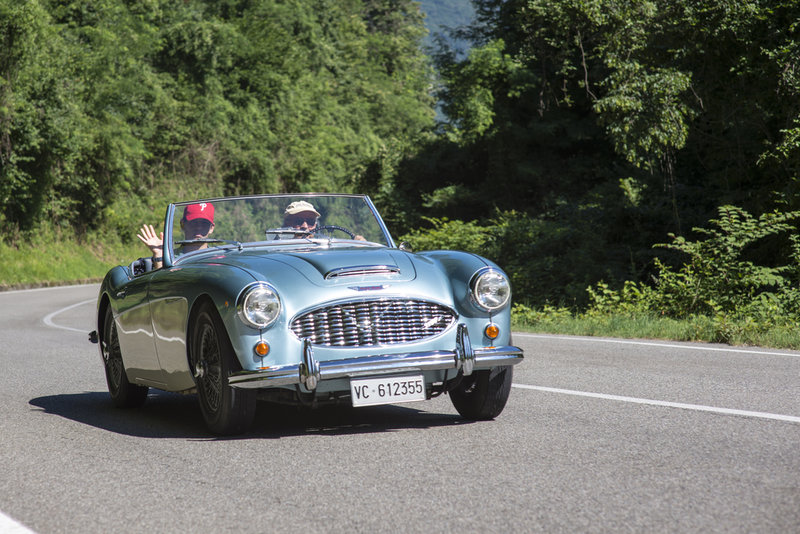The 1959 Austin Healey can actually refer to one of three vehicles, the Sprite Mark 1, the 3000 Mark 1, or the 100-6. Most people who just say the 1959 Austin Healy are referring to the 3000, as this was the year this classic car was first introduced. The 1959 was actually a direct continuation of the 100-6, and externally, it was identical to the outgoing model. The interior and mechanics, however, were very different.

source: ShutterStock
Introducing the Austin Healey 3000
The introduction of the Austin Healey 3000 took place on July 1, 1959, sporting a 3-liter BMC C-Series engine instead of the 2.6-liter found in the 100-6 it replaced. The 3000 also had disc brakes to work with the front wheels. According to manufacturing specs, it needed 11 seconds to reach 60 mph and 31 seconds to hit 100 mph. Compared to the 100-6, the other changes to the 3000 were minimal. Both the body and the wheelbase remained the same.
Even the choice of body styles was the same, either a 2+2 BT7 or the two-seater BN7. The first Austin Healey 3000 had minimal weather protection in the form of a folding plastic roof that sat on a light frame you could demount. There were also detachable side screens that held sliding panels. This was not a vehicle you wanted to be driving when caught in a surprise rainstorm. Other options for the auto-included a heater, laminated windscreen, overdrive gearbox, wire wheels, two-tone paint, adjustable steering column, and a detachable hard top in the case of the 2+2.
How It Actually Performed
In a review from the time, the 1959 Austin Healey 3000 reached 115 mph as its top speed and was able to go from a standstill to 60 mph in just 11.7 seconds. The test car got the U.S. equivalent of 18 mpg.
A Glance at Later Versions
The Mk2 of the Austin Healey 3000 arrived in 1961 and was more user-friendly. The roadsters featured three carburetors, as well as an enhanced camshaft and a vertical-barred front grille.
In 1962, a BJ7 sports convertible joined the lineup as a true convertible featuring the comfort drivers expected from a saloon car. It also had wind-up side windows, a new wraparound windscreen, and a folding roof with quick action.
The Mk3 launched in 1964 and was the most powerful of the bunch, getting up to 121 mph as its top speed. Phase 2 versions of this auto even had a revised rear suspension that enhanced handling.
The Austin Healey 3000 ended in March 1968, to be replaced by the MGC.

source: ShutterStock
If You Find One
Those who are interested in driving a 1959 Austin Healey will have a few points working in their favor. The engines can last a very long time with proper maintenance, so this should not be a major concern. You may need to watch out for worn steering boxes, though. No matter what you do, be sure that any replacement parts are appropriate for the vehicle. Since it is old, previous buyers may have taken an easy route when making repairs and opted for newer components instead of those true to the vehicle. However, that might not be a bad thing, depending on your perspective.
